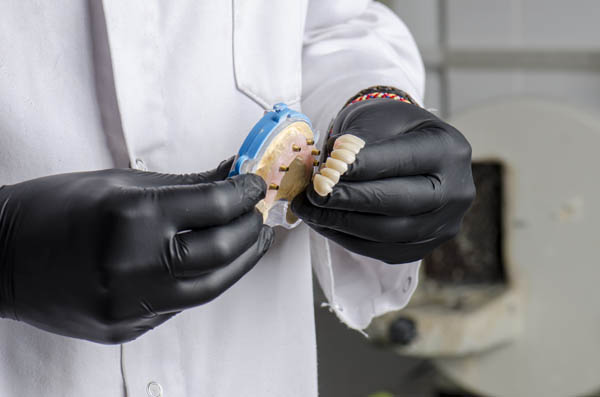Dental bridges have become a preferred method of treatment for a missing tooth or in some cases, multiple missing teeth.
A dental bridge is a dental restoration procedure that places an artificial tooth, or multiple teeth, adjacent to the natural teeth.
Pros of dental bridges
Dental bridges are certainly beneficial in several ways. For anyone looking for a way to restore their smile, along with the feel and function of their teeth, a dental bridge is a great way to do so.
Here are the biggest advantages dental bridges can have.
Look, feel and function like natural teeth
The biggest advantage of dental bridges is that they allow individuals the opportunity to fully restore the look, feel and function of their teeth. Missing teeth can cause real health concerns and cosmetic difficulties. Dental bridges, however, completely restore your smile and make biting and chewing much easier.
Strengthen adjacent teeth
Before placing dental bridges, the adjacent teeth need to be strong. If they are not, the dentist may use dental procedures to strengthen them. Additionally, the process of applying the bridge naturally provides the adjacent teeth with support and strength that they did not have originally.
Simple, non-invasive procedure
Some dental restorative process can involve surgery and multiple trips to the dentist office. Dental bridges, however, are simple procedures that can be completed in just a few short dental visits and typically do not require a surgical procedure. Subsequently, dental bridges may even be a less expensive option as well.
Cons of dental bridges
While there are certainly multiple benefits of a dental bridge, there are potential disadvantages to be aware of before deciding on bridges over other restorative options.
In most cases, the disadvantages of dental bridges are minor and not a real cause for concern.
Affects surrounding teeth
Dental bridges can strengthen the adjacent teeth, which many see as a good thing. However, some may be wary of the idea of altering healthy teeth in order to place a dental bridge. In some cases, the size and shape of the adjacent teeth may need to be altered in order to place the dental bridge.
Does not feel as natural as dental implants
Since dental bridges are not fused into the jawbone, as is the case with dental implants, they may feel slightly less natural than a dental implant. However, they typically are not distinguishable from real teeth, and since they do not require fusing with the jawbone, there is no surgery needed, which should ease any nerves surrounding the operation.
May require replacement
Since dental bridges are not fused into the gums and jawbone, they are not as permanent as a dental implant may be. In most cases, dental bridges need to be replaced every seven years, although it is not unusual for them to last as long as 10. While the bridge itself may hold up well, they may need replacement to avoid damage to the adjacent teeth.



